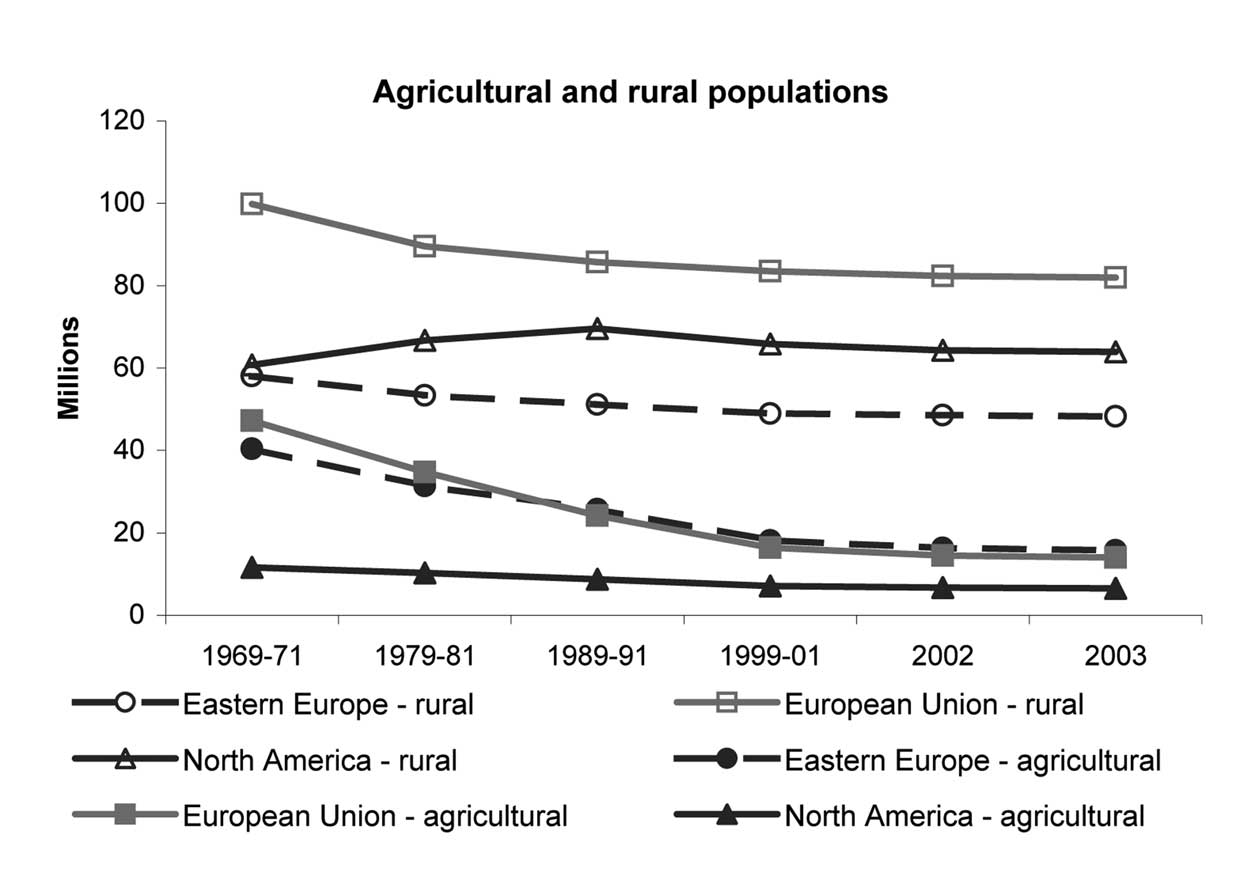overcome the relative lack of competitiveness. Compared with market driven economies the intensity of production and the levels of productivity usually remained lower although output continued to grow.
The effect of new technology is seen in the sustained and substantial improvements in productivity that were achieved (see Chapter 2). Measurements of this are complex. Yields per unit of land of major crop products are a first and very rough proxy for productivity (Chapter 2). Aggregated data of this nature conceals a good deal of variation but the overall message is clear. Yields have increased in every area and while the rate of improvement slowed in the 1980s it has recovered. The substantial gap between the former USSR and other areas has not been removed. This reflects underlying natural conditions. However, even here cereal yields have doubled over the 40 year period (see Chapter 2).
In contrast to many assumptions, GDP per person engaged in agriculture tends to be higher than in the economy as a whole in most NAE countries. Improved technology made possible rises in GDP per worker. In Europe and North America GDP (Gross Domestic Product) per person seems to have risen faster in agriculture than in the economy as a whole although the share of agriculture in the overall economy has declined (Figure 3-5).
3.2.2 Impact of AKST on supply and demand
The tendency for real prices to fall has led to demands for protection. Agricultural policies have mitigated but not prevented falling prices in markets such as the EU and USA. External markets, which have absorbed varying levels of surplus from these protected markets, have been volatile and experienced the full impact of the tendency for real prices to fall.
The EU is the largest agricultural trader (Figure 3-6). Even when intra EU trade is excluded, it remains a major player in the market for many important commodities (Table 3-4). Price support combined with rising productivity led to a situation in which substantial export subsidies were |
|
needed to enable domestic production to compete in world markets. Since 2003 many subsidies have been decoupled from production allowing the prices farmers receive to reflect market realities. Income support has been provided by direct payments fixed on the basis of production in 2002-2003.
Export subsidies mean that relatively modest shifts in consumption or production spill over into the world market where they may influence world prices. The effect of growing productivity within NAE countries, driven by AKST and price support, has thus been to depress world prices. The impact of improving productivity, combined with subsidies on exports is illustrated in the falling trend of commodity real prices shown below (Figure 3-7).
Falling prices can benefit consumers, especially poorer consumers who spend a relatively large share of their income on food. They also benefit net importing countries but may give rise to increased dependence on foreign supplies and reduced investment in local agriculture and its support services. This has had the effect of making import prices low and volatile for importing countries. For developing countries low import prices benefit consumers but reduce returns to domestic producers. Because imported food prices are also volatile, they can give rise to unpredictable and unaf-fordable trade deficits.
Changed technology has also led to a transformation in the way in which food reaches the consumer (Regmi and Gehlhar, 2005; UK, 2005b; USD A, 2005) and has resulted in the production of anonymous, cheap and highly processed and packaged food. Some consumers have reacted to this by seeking alternatives that represent for them higher quality. The response is multidimensional. It includes a growing demand for organic products (Dimitri and Greene, 2002); growing requirements for farmers to increase the welfare of their farm animals in order to be able to sell their products to the European retailers (Defra, 2004a); a growing market for locally produced and fairly traded products (F3, 2007; http://www.fairtrade.net/.). |

